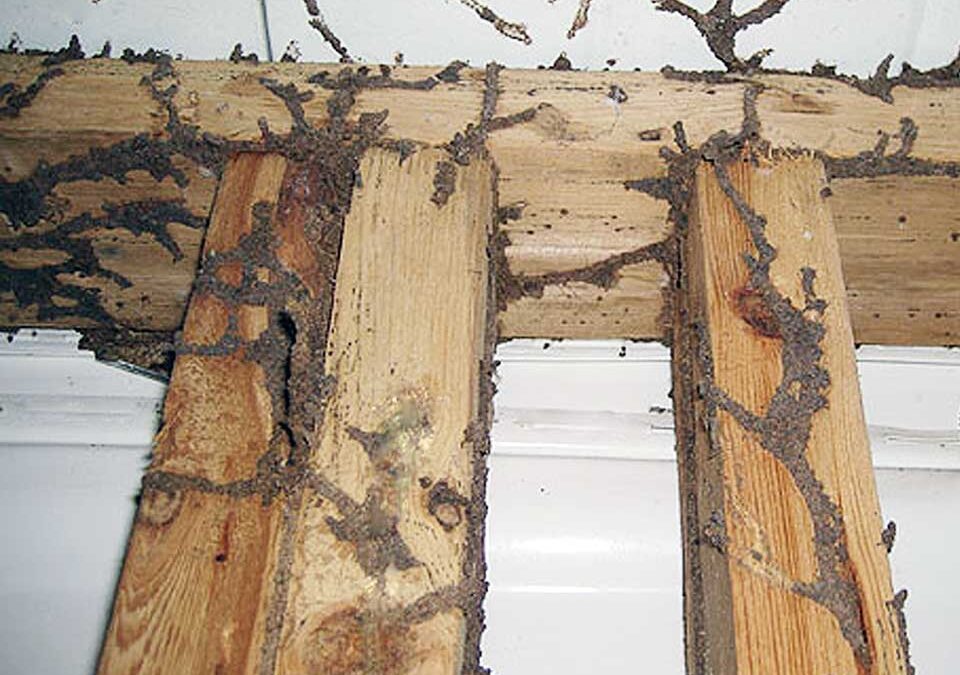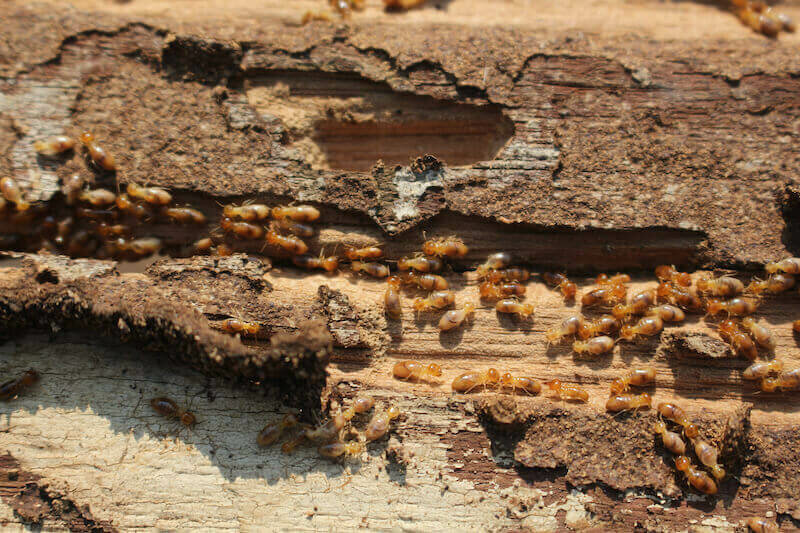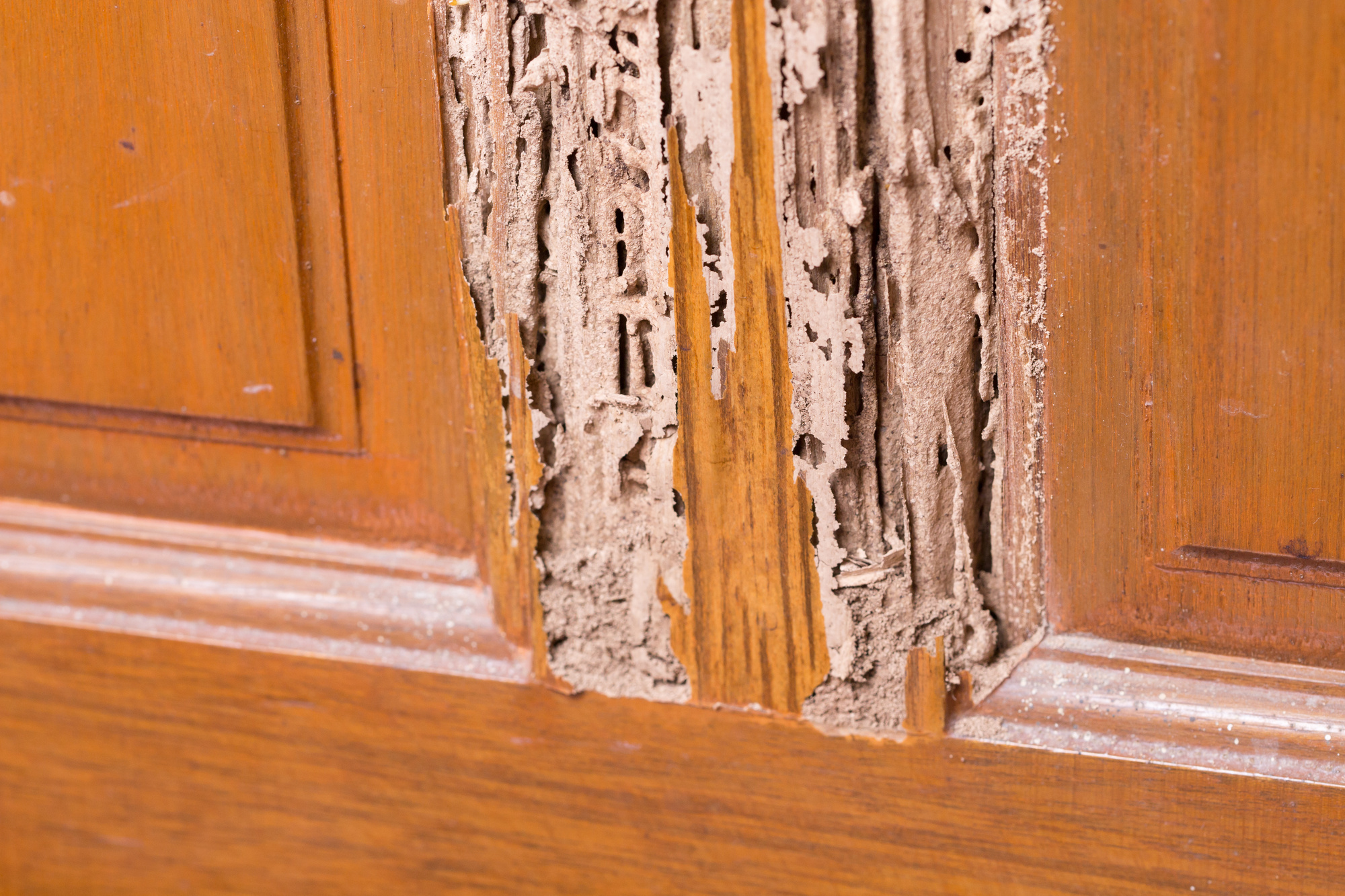Termite Treatments in Florida
Exterminator Services for Deltona, DeLand, DeBary, Orange City, Eustis, and Lake Helen
Florida’s subtropical climate, lauded for its mild winters, steady warmth, and abundant humidity, provides a hospitable environment not only for residents but also for termites. These wood-consuming insects can quietly devastate structural beams, flooring, or furniture from within, often remaining hidden until extensive harm emerges. In Deltona, along with neighboring communities such as DeLand, DeBary, Orange City, Eustis, and Lake Helen, missing early termite indicators can elevate the risk of severe damage, occupant concerns, and major repair expenses. This service page clarifies how termites thrive in Florida’s conditions, what to watch for when suspecting an infestation, and why opting for a professional termite exterminator for termite treatments remains the most thorough strategy. Acting quickly, whether you spot mud tubes near foundations or piles of discarded wings, protects your investment from ongoing internal decay and occupant uncertainty over silent wood loss.
Why Termites Thrive in Florida

- Mild Winter Temperatures
In colder climates, persistent freezing winters help reduce termite activity for months, curbing reproduction until milder weather. Florida’s winter seldom dips below freezing for a prolonged stretch, allowing termites to remain active. Indoors, occupant-controlled heating or cooling fosters an environment where termites can feed and nest year-round unless occupant vigilance or professional interventions limit them. - Frequent Rain and High Humidity
Termites require moisture, especially subterranean species that build mud tubes from soil nests to wooden beams. Florida’s humidity, paired with frequent rainfall, provides moist conditions that support termite survival. Even minimal leaks—like under sinks or behind walls—can perpetuate damp wood favored by drywood or dampwood termites. Such conditions prompt occupant or caretaker checks to avoid unnoticed termite expansions. - Minimal Seasonal Dormancy
In many colder regions, termites face partial dormancy during harsh winter. In Deltona’s subtropical environment, no extended freeze occurs to slow termite foraging or breeding cycles. A small presence left undiscovered can grow robustly unless occupant synergy or professional steps detect them early. - Prevalent Wooden Structures
From the framing in newly built properties to older wooden beams, Florida homes often feature wood for structural or decorative elements. Direct soil-wood contact near foundations or rotting wooden sills invite subterranean termites, while damp attics or less ventilated corners draw dampwood or drywood variants. Spotting even small mud tubes or frass (droppings) warns occupant that a termite colony lurks within. - Frequent Movement of Goods and People
Communities around Deltona, DeLand, or Orange City may see occupant transitions or secondhand item trades, unknowingly bringing termite-infested wood indoors. Mild Florida weather fosters near-constant termite breeding once introduced. Without occupant or caretaker checks—like scanning wooden items for droppings or hidden galleries—termites quietly nest and multiply.
Signs of a Termite Infestation
- Mud Tubes Along Foundations or Walls
Subterranean termites build pencil-thin earthen tubes connecting soil nests to wooden feeding sites. Spotting these tubes near crawl spaces, basement corners, or around interior walls strongly suggests active termite travel. Breaking a segment open might reveal worker termites if the colony remains undisrupted. - Discarded Wings
Winged termites (swarmers) emerge from mature colonies to establish new nests. Once they land, they shed identical, translucent wings in piles near window sills, doorframes, or well-lit corners. Discovering these wings indoors is a sure sign a termite colony wants to expand. - Hollow-Sounding or Damaged Wood
Termites typically consume wood from the inside out, leaving a thin outer layer intact. Tapping beams or floors that sound hollow indicates tunneling. Over time, hollowed beams risk structural failure if occupant or caretaker solutions remain absent. Noticing unusual cracks or sagging surfaces can also reflect termite-eaten supports. - Frass (Termite Droppings)
Drywood termites produce grainy, six-sided pellets resembling coarse sawdust (frass). Occupants or staff may discover small piles beneath infested wooden items or along windowsills. Subterranean termites do not produce frass outside the nest; they create mud tubes. Either form of evidence suggests active feeding. - Swarmer Sightings
During warmer months or after rain, you might spot flying termites around lights indoors. Seeing swarmers indoors confirms a mature colony has established or is near, prompting occupant or professional action before new satellite colonies form across the property.

Consequences of Untreated Termite Activity
- Structural Weakness
Unnoticed termites devour beams, joists, or subflooring from within. Floors may begin to sag, walls crack, or doors jam if occupant detection arrives late. Repairing advanced damage—replacing support structures—costs far more than early occupant or professional action upon discovering droppings or mud tubes. - High Repair Costs
Deep termite tunneling can necessitate removing and rebuilding entire sections of a building. Extensive structural issues or replacing compromised wood typically outruns simpler occupant-based dryness corrections or partial treatments possible if discovered sooner. - Occupant Discomfort and Uncertainty
Living or working in a building rumored to house termite colonies undermines occupant peace, fueling concerns about unseen wood destruction. Families may worry about potential collapses or newly discovered damage. Eliminating termites thoroughly plus occupant dryness improvements ensures occupant confidence in structural soundness. - Impacted Property Value
In real estate transactions, termite presence or extensive termite damage can deter buyers or force property owners into lower offers. Thorough occupant or professional solutions—like documented fumigation or soil barriers—preserve property value and occupant trust, especially in a region known for mild winters that encourage termite activity.
Why a Professional Exterminator is Best
- Comprehensive Inspection
A termite exterminator inspects crawl spaces, attics, foundation lines, or suspicious wood for mud tubes, frass, or interior galleries. Identifying whether the infestation is subterranean, drywood, or dampwood clarifies the needed approach—like applying soil barriers or localizing foam injections, or even fumigation for broader coverage. - Targeting Entire Colonies
Termites nest deep in soil or behind walls, meaning occupant or caretaker attempts might only eliminate surface foragers but spare queens or hidden nest cores. Professionals ensure all life stages, including unhatched eggs, face lethal conditions, preventing leftover pockets from resurging. - Precision with Termiticides
Untrained usage of termite sprays risks occupant exposure while missing deeper colony segments. Exterminators apply termiticides in trenches around building perimeters, inject them into cracks, or incorporate baits for thorough coverage. Occupants typically remain on-site, simply waiting for dryness or recommended intervals after certain applications. - Moisture and Structural Guidance
Because Florida’s humidity and occupant-based leaks foster termite growth, occupant dryness upgrades—fixing roof or plumbing drips, venting crawl spaces—curb re-infestation. Professionals might also advise occupant or caretaker solutions—like removing direct soil-wood contact near foundations or discarding rotted beams. - Follow-Up and Monitoring
Since queen termites can lay eggs continuously, occupant or professional re-checks verify no survivors remain. If occupant notices new swarmers or suspicious holes reappear, a second wave of spot treatments or baits finalizes occupant relief, ensuring no hidden group escapes detection.
Approaches to Termite Treatment
- Soil Barriers
For subterranean termites, digging shallow trenches around the structure and filling them with liquid termiticide creates a lethal barrier. Termites crossing from soil to wood contact the chemical, bringing it back to the colony, ensuring widespread kill. Drilling small holes through slabs or patios might be necessary to inject termiticide under concrete. - Bait Stations
Bait systems containing slow-acting toxins lure worker termites, who feed and share it with nest mates. This method kills entire subterranean colonies from within over weeks. Occupant or caretaker monitors station usage periodically, replenishing bait as needed until termite activity diminishes. - Drywood Termite Options
If occupant or caretaker sees drywood termite pellets or pinpoint holes, local foam injections might suffice for smaller infestations. Multi-room or large-scale drywood infestations often warrant whole-structure fumigation, saturating walls, attics, or furniture with lethal gas. Occupants vacate temporarily, returning once the property is aerated post-treatment. - Spot Treatments
For limited drywood termite pockets—like in a single piece of furniture or an isolated wood section—direct injections of pesticides or spot heat can eradicate small colonies. Ensuring occupant dryness or re-sealing cracked windows prevents fresh termite infiltration, shutting down expansions.
Moisture Management
Implementing occupant dryness measures—like re-routing AC condensate, ensuring roof drainage, or ventilating crawl spaces—removes the damp conditions many termite species need. Replacing rotted wood or storing lumber away from soil also lowers termite attraction.

Coverage Areas: Deltona, DeLand, DeBary, Orange City, Eustis, Lake Helen
Deltona: Rapidly growing residential hubs can see termite invasions if occupant or caretaker vigilance is lacking. Swift occupant checks—like scanning foundation lines for mud tubes—plus robust termite solutions hamper expansions across older wooden beams or multi-floor properties.
DeLand: Known for its historical district and older homes, DeLand might see termites hidden in century-old wood structures or neglected corners. Occupant synergy—like dryness management—and immediate professional attention if occupant notices discarded wings ensures minimal structural harm.
DeBary: A suburban area bridging farmland with new developments, DeBary’s environment fosters subterranean termites near soil-wood contact zones if occupant or caretaker oversight is minimal. Occupant-based dryness plus soil barriers or baits keep colonies from saturating beams or floors.
Orange City: A smaller locale where occupant transitions or short-term visitors might inadvertently bring termites in wooden crates or antiques. Occupants verifying used items or scanning corners for suspicious droppings can hamper infiltration, with an integrated termite plan ensuring thorough coverage.
Eustis: Scenic lakes and mild climate define Eustis, but damp yard edges or rotted wood near foundations can beckon termites. Occupant synergy—like replacing water-damaged beams—plus professional solutions hamper expansions that overshadow daily routines.
Lake Helen: Known for tranquility, Lake Helen’s subtropical environment rarely imposes termite-slowing cold. Occupant-based dryness checks—ensuring no unaddressed plumbing leaks—plus robust chemical or bait coverage keeps colonies from nesting behind walls or in attics.
Why Our Termite Treatments Excel
- Florida-Adjusted Approaches
With southwestern Florida’s mild winter rarely stalling termite breeding, occupant synergy—like dryness improvements and sealing cracks—plus potent chemical or bait solutions ensures thorough coverage from colony cores to outlying foragers. - Precision, Reduced Occupant Disruption
We apply termiticides or baits exactly where termites tunnel—like perimeter trenches or direct wood injections—preserving occupant areas from unnecessary chemical exposure. Occupants typically only step away while products settle, quickly resuming normal routines once dryness or recommended intervals pass. - Holistic Colony Elimination
Our solutions do more than kill visible termite workers. By targeting queens, brood, and unhatched eggs, we remove entire colonies. Occupants gain lasting relief without partial success overshadowed by leftover termite pockets re-infesting wooden beams. - Follow-Up Confirmation
Because eggs or hidden sub-colonies might remain if occupant infiltration points are missed, occupant or scheduled re-checks verify no survivors. If occupant sightings reappear—like fresh mud tubes—spot or advanced treatments finalize occupant comfort, ensuring no hidden group escapes detection.
Next Steps
Spotting mud tubes near foundations, discovering pellet-like droppings under window sills, or noticing hollow-sounding wood when tapped? Contact us to learn more or schedule your service. Our termite exterminator strategies in Deltona, DeLand, DeBary, Orange City, Eustis, and Lake Helen target active colonies comprehensively, annihilating queens, eggs, and workers behind walls or inside attic corners. Timely occupant action spares you from massive repairs, occupant worries over structural soundness, and repeated treatments overshadowing your daily peace.
With proven tactics—soil barriers for subterranean termites, fumigation for widespread drywood infiltration, or selective foam injections for small pockets—property owners preserve the integrity of beams and floors under Florida’s subtropical conditions. Occupant synergy—like dryness adjustments, removing rotted sills, or sealing foundation cracks—further deters new invasions. Freed from silent chewing in the walls, central Florida occupants relish the region’s mild winters and scenic environment untroubled by hidden wood-destroying insects.
